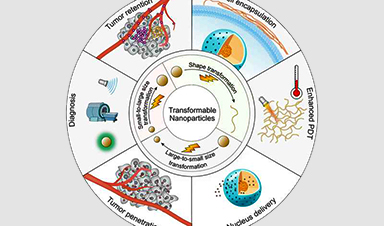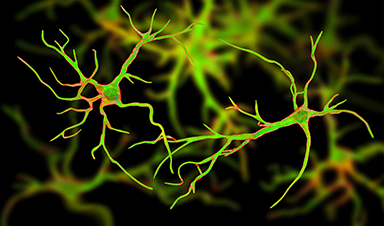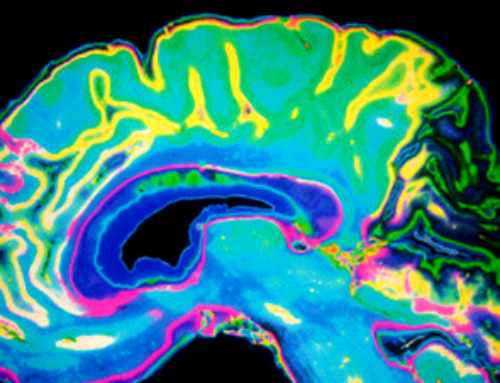For more than three decades, biomedical nanomaterials have been successfully developed for the benefit of theranostics—a compound term referring to the diagnoses and treatment of tumors. The nanoparticles must reach the tumor site and its distinct microenvironment to target the treatment for the tumor.
In Applied Physics Reviews, researchers from China and the United States examine how biology triggers morphological changes in certain types of nanoparticles. These types of particles are called smart transformable nanoparticles, because they can alter their size and shape upon stimulation from their surrounding environment.
These smart transformable nanoparticles are particularly promising for tumor theranostics because their physical properties will adapt to the physiology. These adaptations improve particle circulation, biodistribution, tumor penetration, tumor retention, and subcellular distribution for targeted therapy.
“Smart transformable nanoparticles can alter their morphologies under different physiological conditions as the therapeutic demands,” said co-author Jianxun Ding. “In our study, we reveal the structural designs for these smart systems as well as the in-depth mechanisms of the transformations.”
The researchers present the designs of transformable nanoparticles as a guideline for their construction and discuss the biomedical applications in the realm of theranostics. Ding and his colleagues showcase their insight through novel classifications for nanoparticle transformation design and the mechanisms contributing to the change.
For instance, the researchers divide the design transformation into two broad categories: size and shape. For size-transformable nanoparticles, the alterations are further divided into small-to-large and large-to-small transformations. The study discloses detailed and rational designs of transformable nanoparticles based on their structures.
As for the mechanisms contributing to nanoparticle transformation, “we believed the structure and stimuli both made a great contribution,” said Ding. “For example, different pH values decided the accurate site for the transformation, which correlate to varying physiological, extracellular, and endo/lysosomal conditions.”
Nanoparticles with constant physical morphologies have been widely investigated and applied in tumor theranostics in the past, while more recent studies of nanoparticle transformation phenomena have focused primarily on the response to stimuli. Until now, however, there has not been an in-depth discussion on the designs and applications of morphology-transformable nanoparticles.
“Our review covers the structure design, mechanism for transformation, and biomedical application of smart transformable nanoparticles, and includes perspectives on their limitations as well,” said Ding. “We believe this review will shed light on this important field.”
News
Researchers highlight five pathways through which microplastics can harm the brain
Microplastics could be fueling neurodegenerative diseases like Alzheimer's and Parkinson's, with a new study highlighting five ways microplastics can trigger inflammation and damage in the brain. More than 57 million people live with dementia, [...]
Tiny Metal Nanodots Obliterate Cancer Cells While Largely Sparing Healthy Tissue
Scientists have developed tiny metal-oxide particles that push cancer cells past their stress limits while sparing healthy tissue. An international team led by RMIT University has developed tiny particles called nanodots, crafted from a metallic compound, [...]
Gold Nanoclusters Could Supercharge Quantum Computers
Researchers found that gold “super atoms” can behave like the atoms in top-tier quantum systems—only far easier to scale. These tiny clusters can be customized at the molecular level, offering a powerful, tunable foundation [...]
A single shot of HPV vaccine may be enough to fight cervical cancer, study finds
WASHINGTON -- A single HPV vaccination appears just as effective as two doses at preventing the viral infection that causes cervical cancer, researchers reported Wednesday. HPV, or human papillomavirus, is very common and spread [...]
New technique overcomes technological barrier in 3D brain imaging
Scientists at the Swiss Light Source SLS have succeeded in mapping a piece of brain tissue in 3D at unprecedented resolution using X-rays, non-destructively. The breakthrough overcomes a long-standing technological barrier that had limited [...]
Scientists Uncover Hidden Blood Pattern in Long COVID
Researchers found persistent microclot and NET structures in Long COVID blood that may explain long-lasting symptoms. Researchers examining Long COVID have identified a structural connection between circulating microclots and neutrophil extracellular traps (NETs). The [...]
This Cellular Trick Helps Cancer Spread, but Could Also Stop It
Groups of normal cbiells can sense far into their surroundings, helping explain cancer cell migration. Understanding this ability could lead to new ways to limit tumor spread. The tale of the princess and the [...]
New mRNA therapy targets drug-resistant pneumonia
Bacteria that multiply on surfaces are a major headache in health care when they gain a foothold on, for example, implants or in catheters. Researchers at Chalmers University of Technology in Sweden have found [...]
Current Heart Health Guidelines Are Failing To Catch a Deadly Genetic Killer
New research reveals that standard screening misses most people with a common inherited cholesterol disorder. A Mayo Clinic study reports that current genetic screening guidelines overlook most people who have familial hypercholesterolemia, an inherited disorder that [...]
Scientists Identify the Evolutionary “Purpose” of Consciousness
Summary: Researchers at Ruhr University Bochum explore why consciousness evolved and why different species developed it in distinct ways. By comparing humans with birds, they show that complex awareness may arise through different neural architectures yet [...]
Novel mRNA therapy curbs antibiotic-resistant infections in preclinical lung models
Researchers at the Icahn School of Medicine at Mount Sinai and collaborators have reported early success with a novel mRNA-based therapy designed to combat antibiotic-resistant bacteria. The findings, published in Nature Biotechnology, show that in [...]
New skin-permeable polymer delivers insulin without needles
A breakthrough zwitterionic polymer slips through the skin’s toughest barriers, carrying insulin deep into tissue and normalizing blood sugar, offering patients a painless alternative to daily injections. A recent study published in the journal Nature examines [...]
Multifunctional Nanogels: A Breakthrough in Antibacterial Strategies
Antibiotic resistance is a growing concern - from human health to crop survival. A new study successfully uses nanogels to target and almost entirely inhibit the bacteria P. Aeruginosa. Recently published in Angewandte Chemie, the study [...]
Nanoflowers rejuvenate old and damaged human cells by replacing their mitochondria
Biomedical researchers at Texas A&M University may have discovered a way to stop or even reverse the decline of cellular energy production—a finding that could have revolutionary effects across medicine. Dr. Akhilesh K. Gaharwar [...]
The Stunning New Push to Protect the Invisible 99% of Life
Scientists worldwide have joined forces to build the first-ever roadmap for conserving Earth’s vast invisible majority—microbes. Their new IUCN Specialist Group reframes conservation by elevating microbial life to the same urgency as plants and [...]
Scientists Find a Way to Help the Brain Clear Alzheimer’s Plaques Naturally
Scientists have discovered that the brain may have a built-in way to fight Alzheimer’s. By activating a protein called Sox9, researchers were able to switch on star-shaped brain cells known as astrocytes and turn them into [...]





















